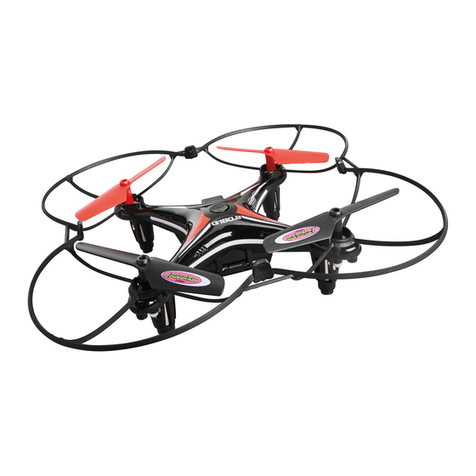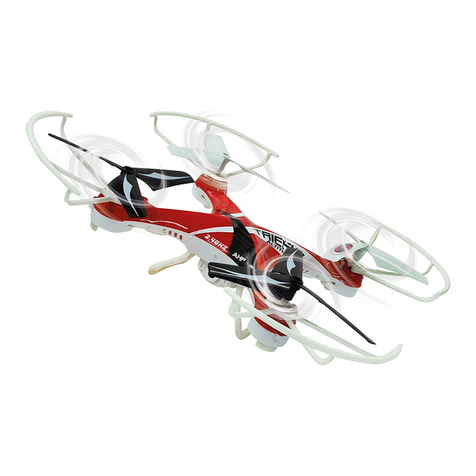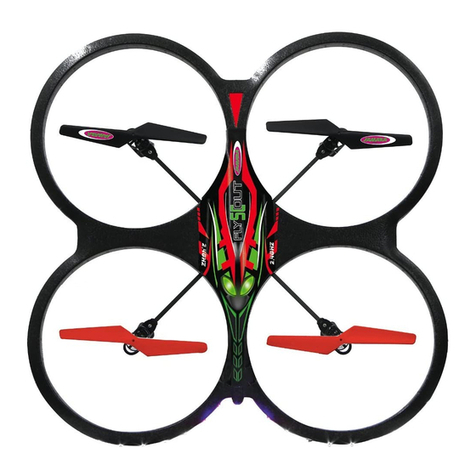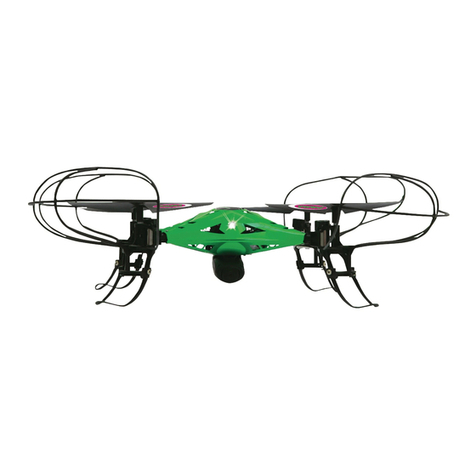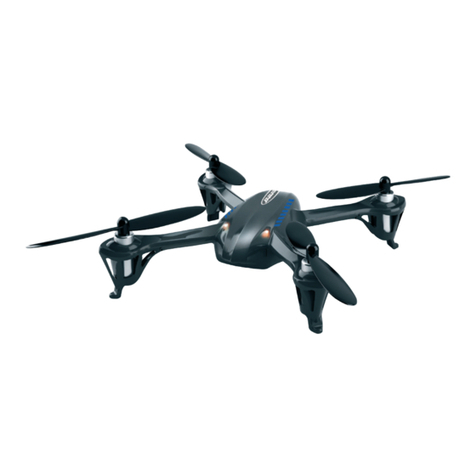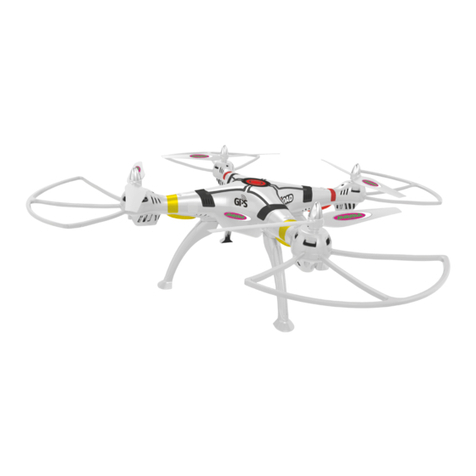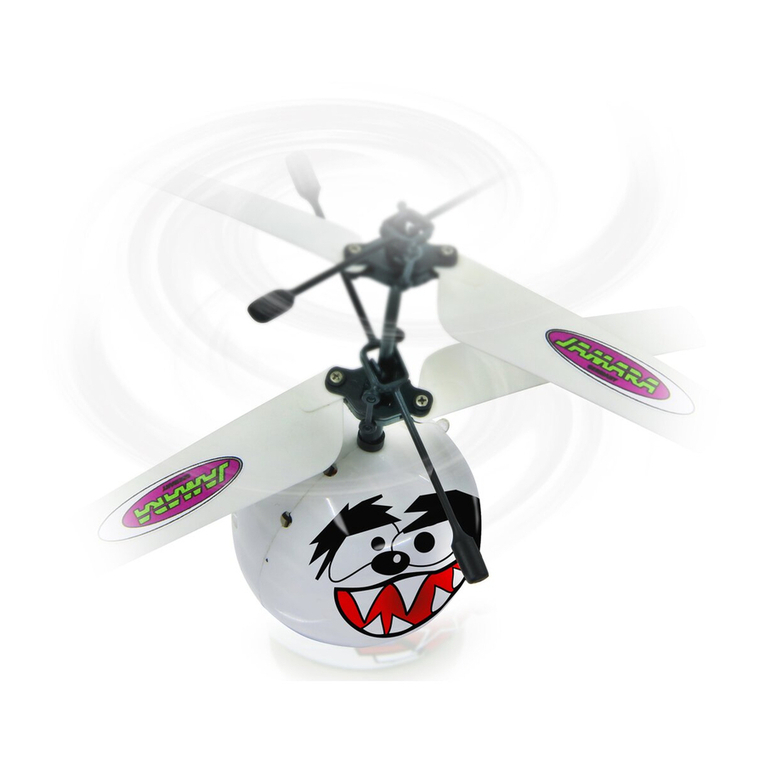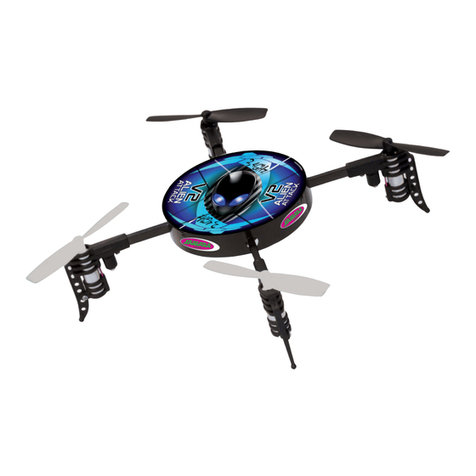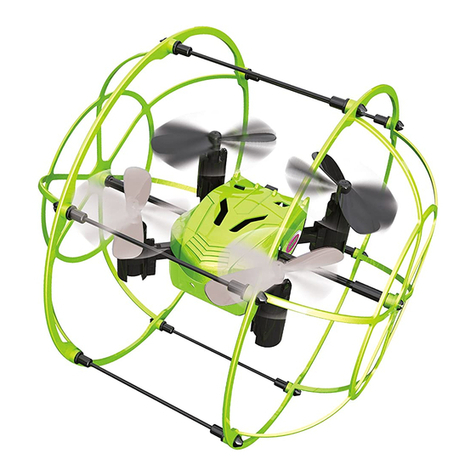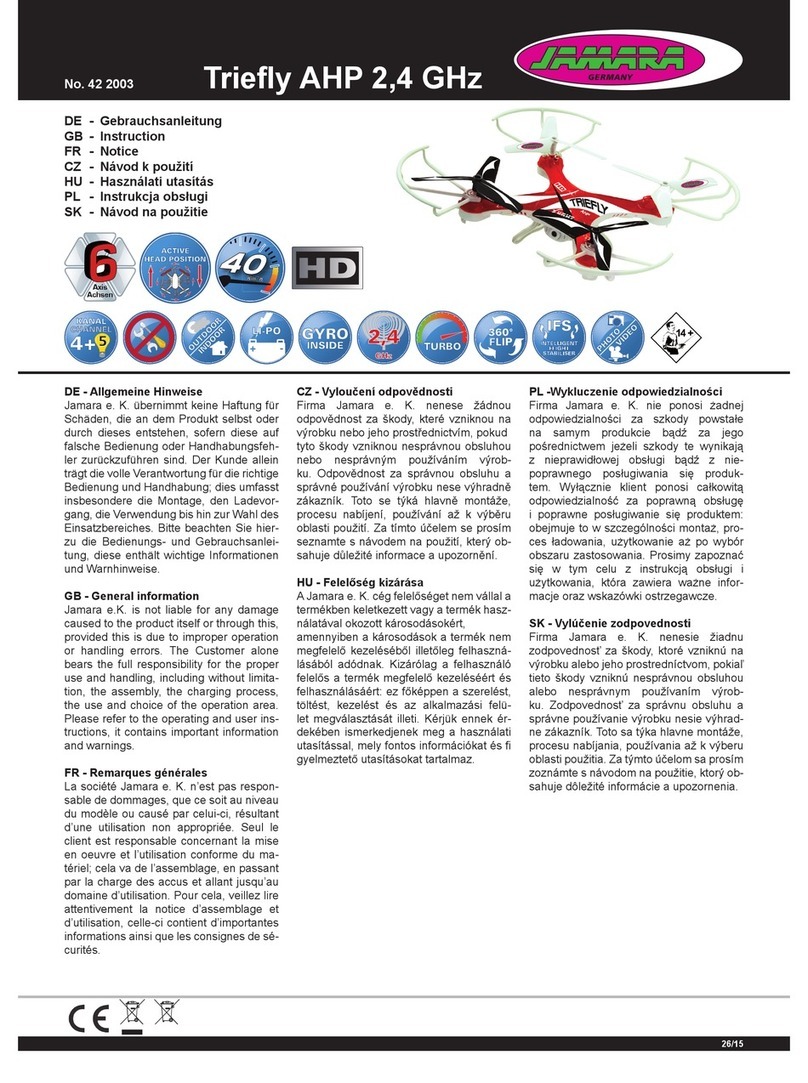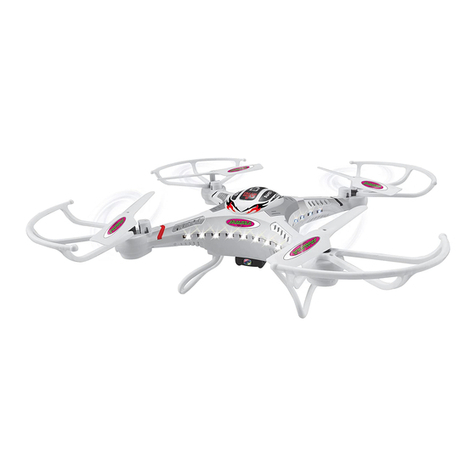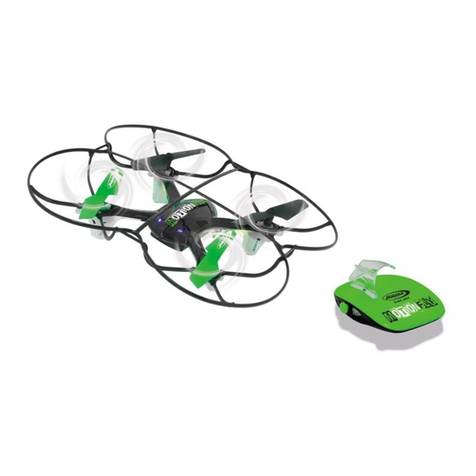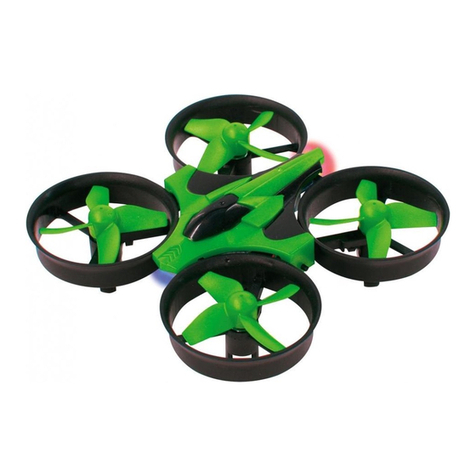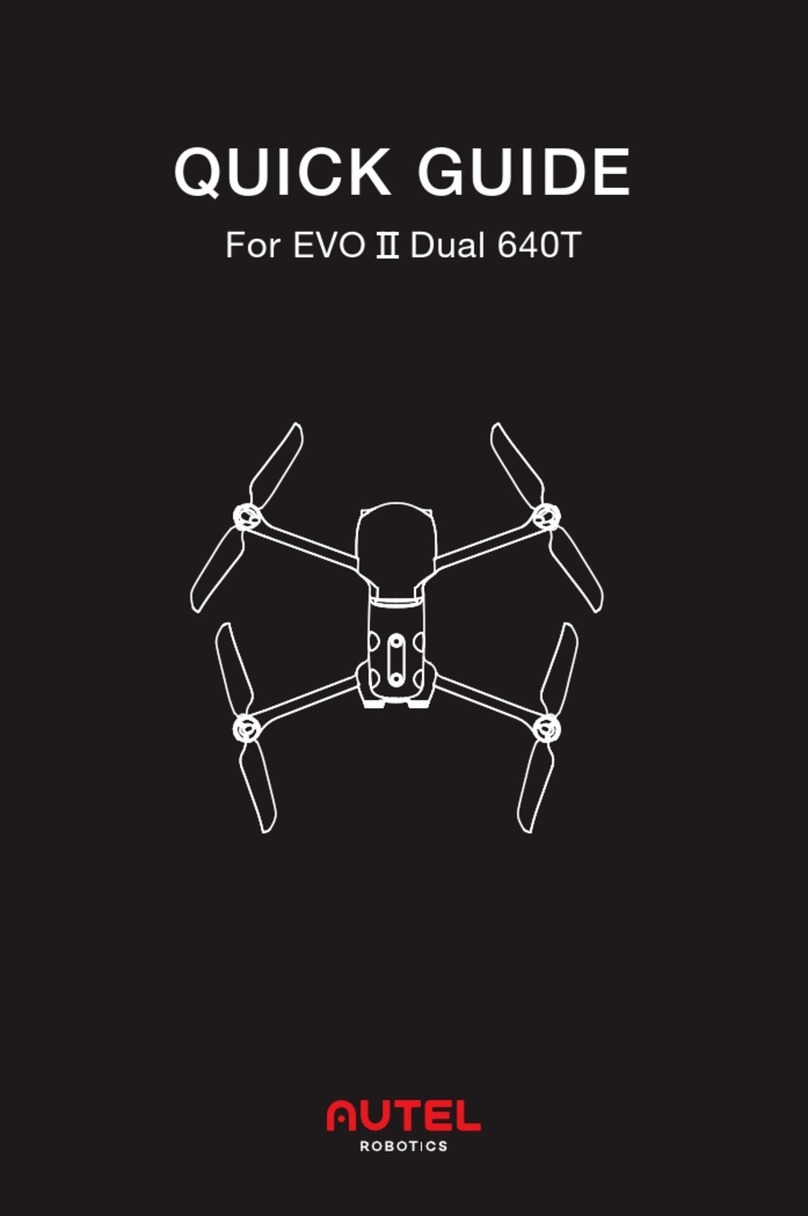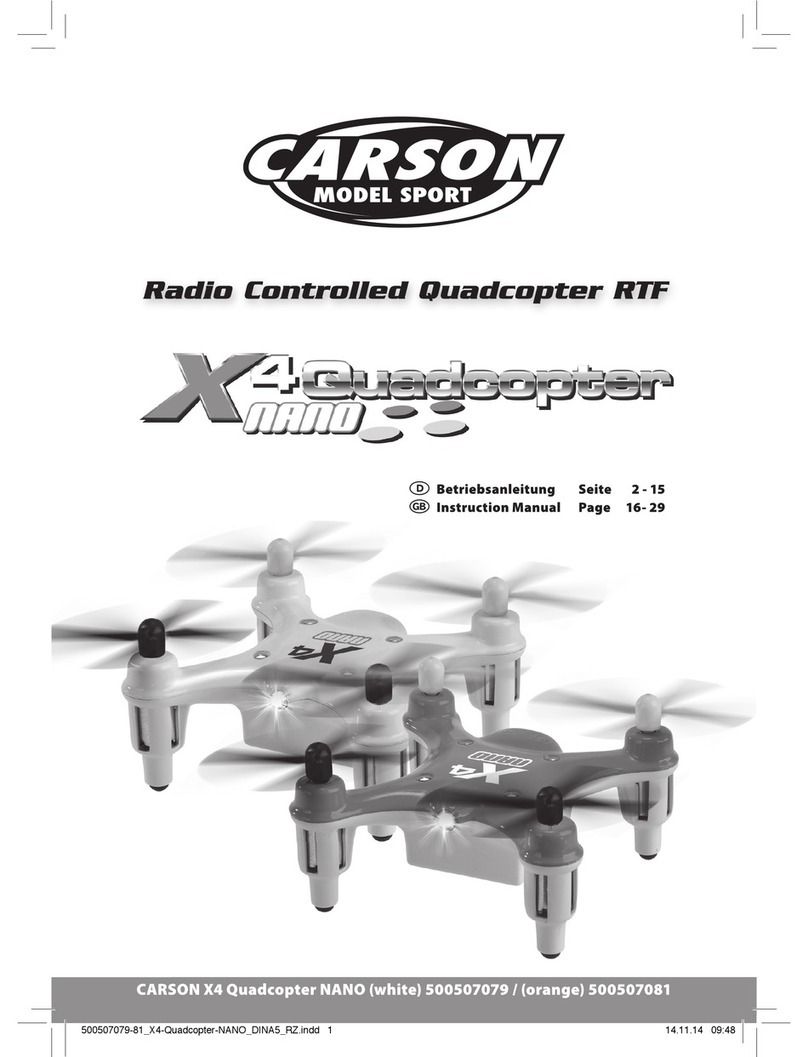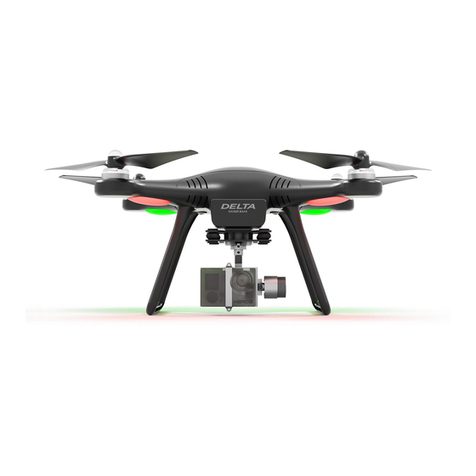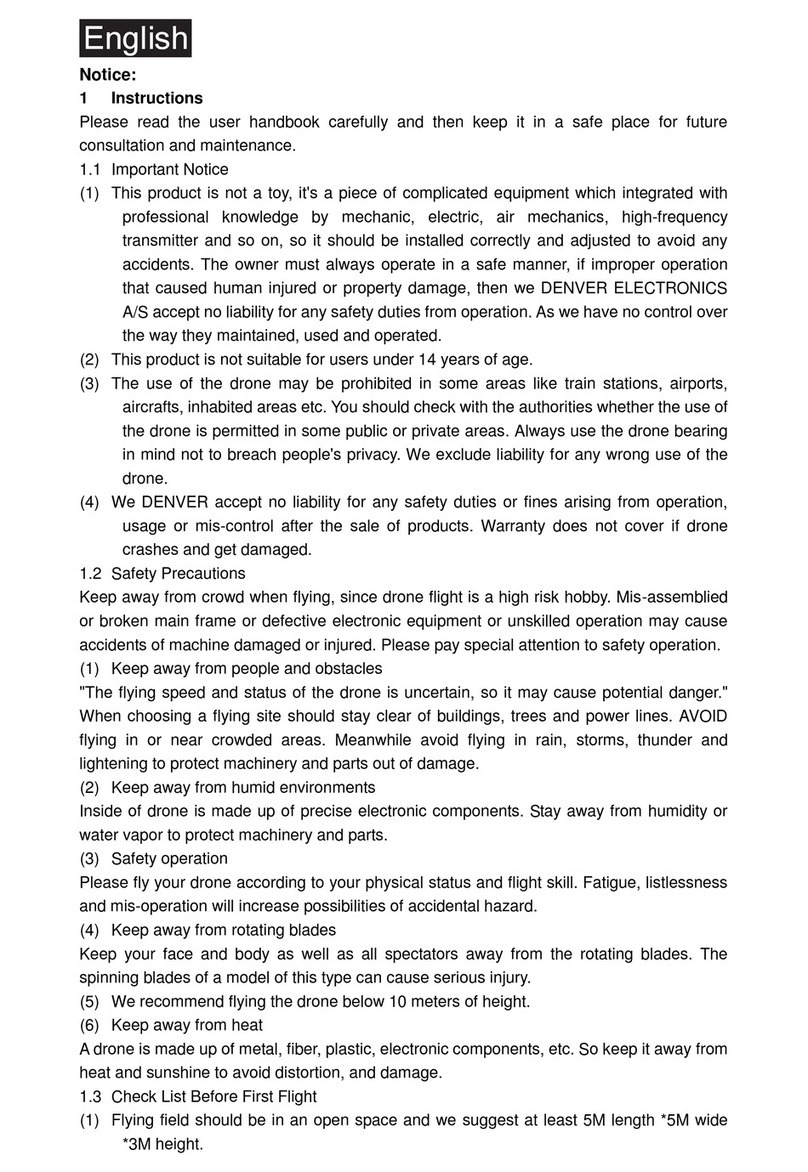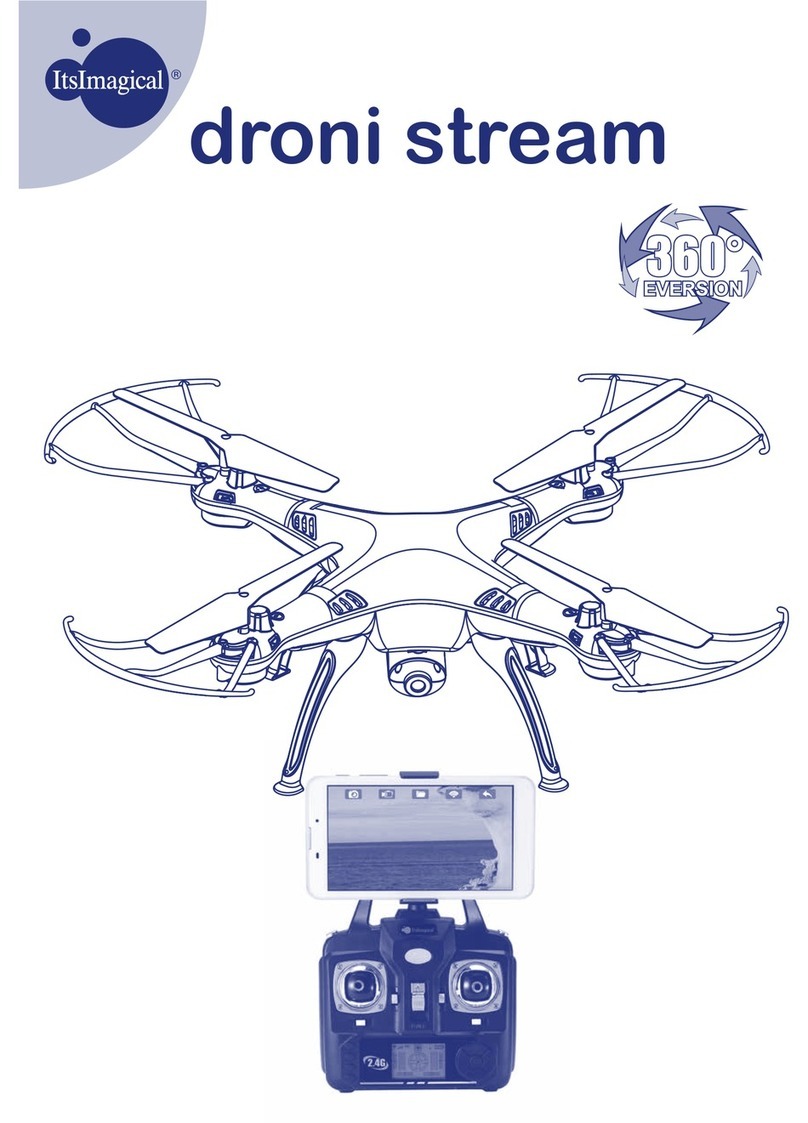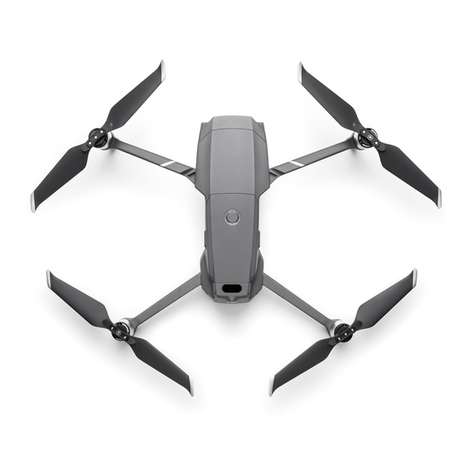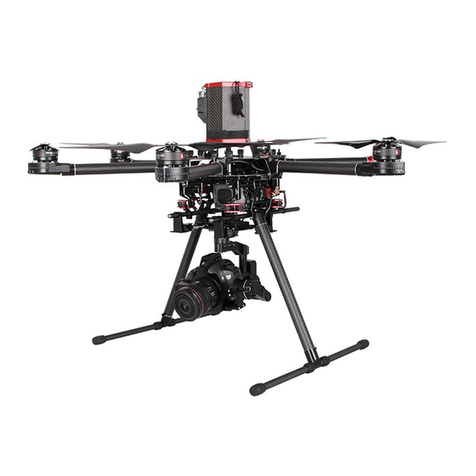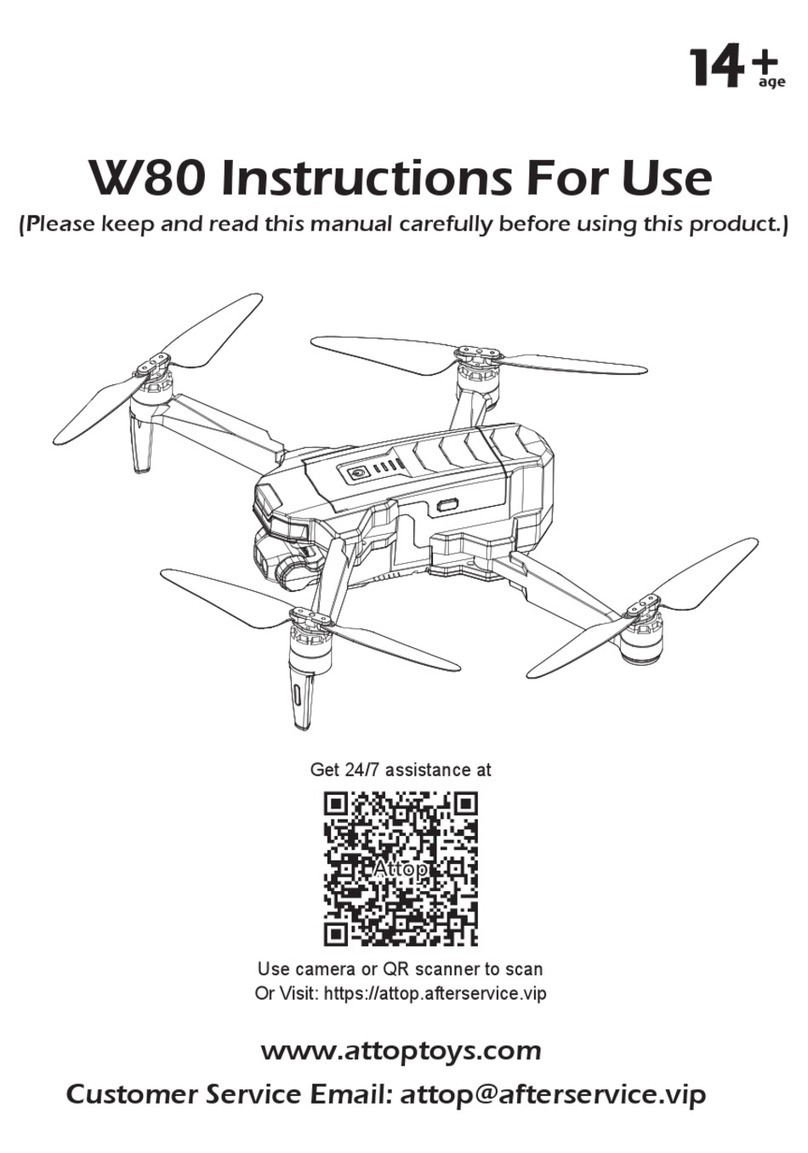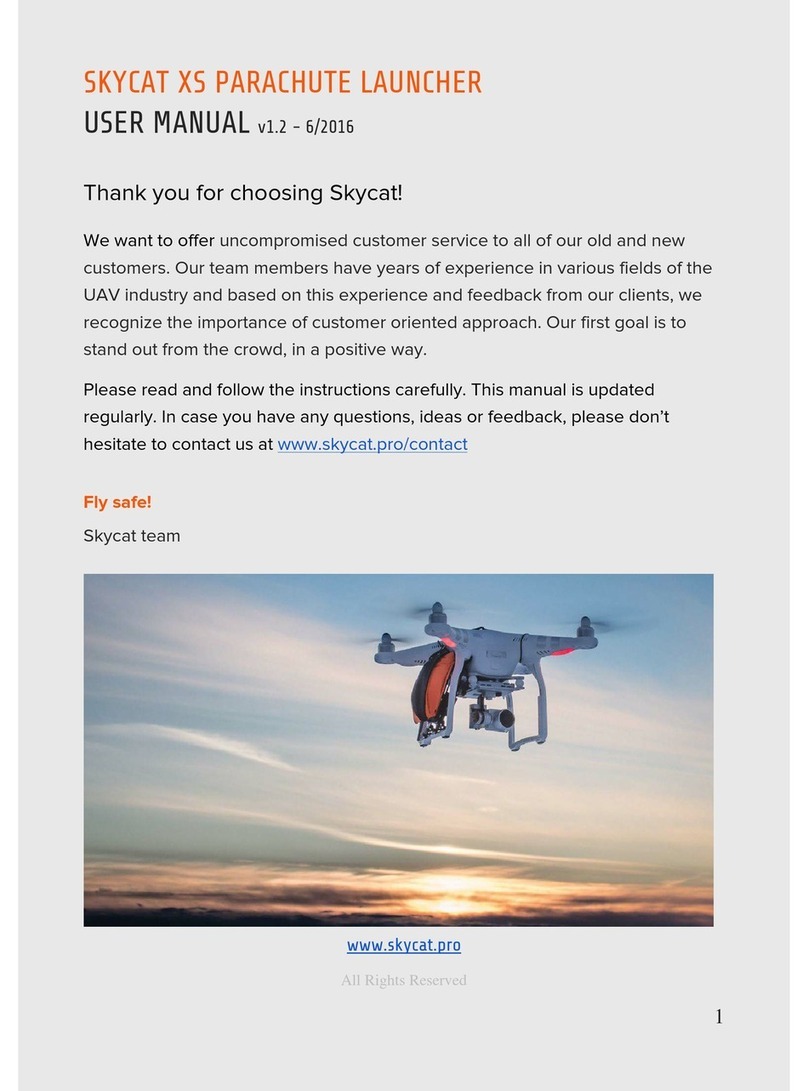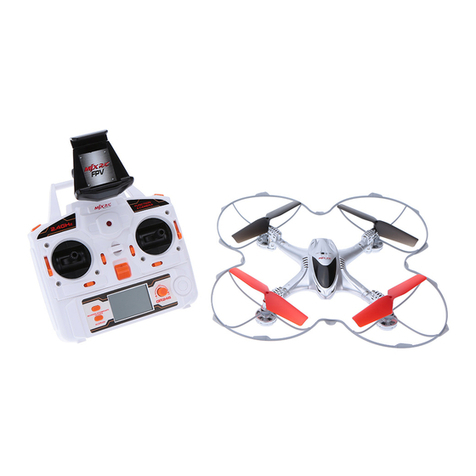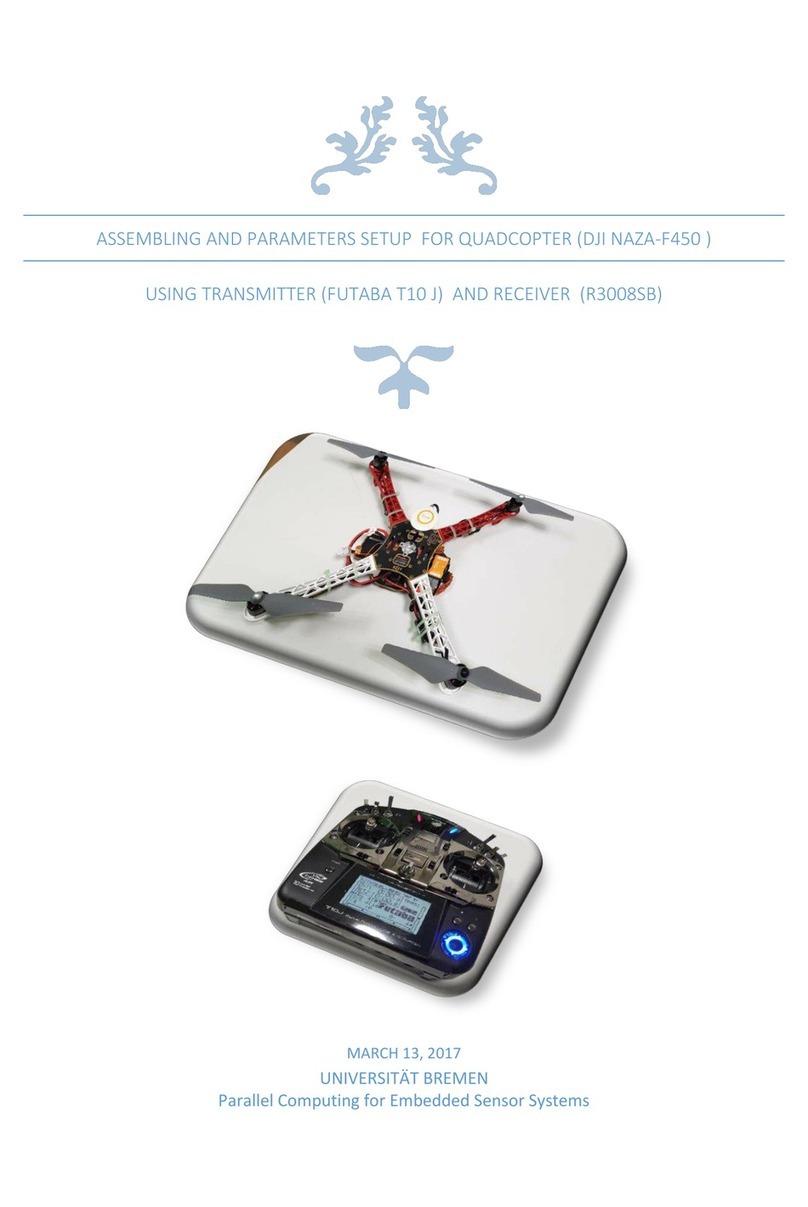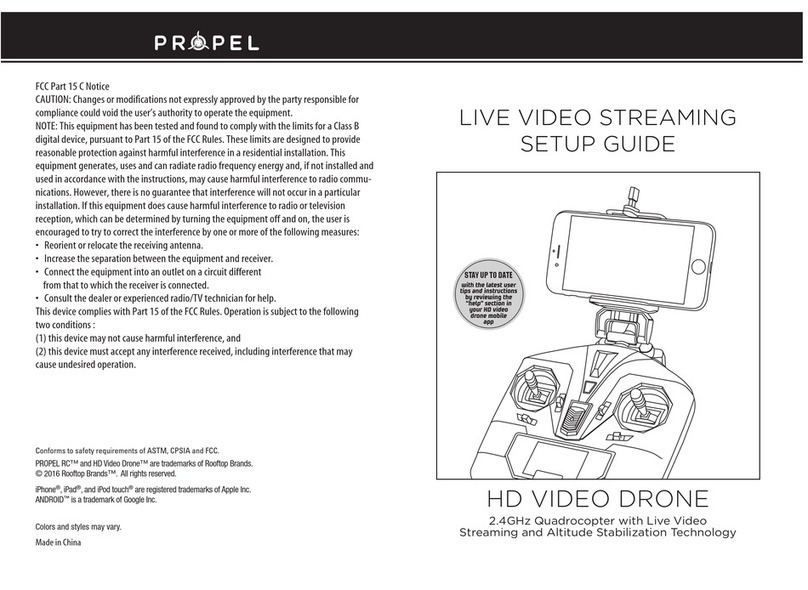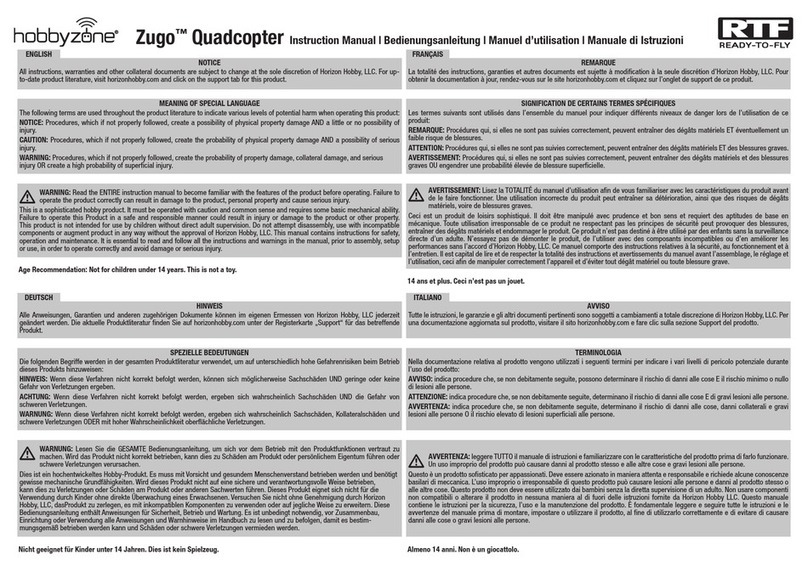
8
DE - Anfänger/Fortgeschritten/Pro Modus
Durch drücken des Gashebels an der Fernsteuerung, können
Sie zwischen 3 Flug-Modi wählen.
A. Einsteiger-Modus (1 x Peep)
Das Modell hat geringe Ausschläge, Steuerbefehle werden
sanft ausgeführt.
B. Fortgeschrittener-Modus (2 x Peep)
Die Ausschläge des Modells sind größer, Steuerbefehle
werden direkter ausgeführt.
C. Pro -Modus (3 x Peep)
Volle Ausschläge am Modell, Steuerbefehle werden agressiv
umgesetzt.
GB - Beginners/advanced/expert mode
By pressing the speed control stick on the transmitter you will be
able to choose from 3 ight modes.
A. Beginner mode (1 x beep)
The model has small de exions, controls are performed
smoothly.
B. Advanced mode (2 x beep)
The de exions are higher, controls are performed directly.
C. Expert mode (3 x beep)
Full de exion on model, controls are performed aggressively.
FR - Mode débutant/avancé/professionnel
En appuyant sur la manette des gaz de la télécommande, vous
pouvez choisir entre trois modes de vol.
A. Mode débutant (1 x beep)
Le modèle a des déviations insigni antes, commandes de
contrôle sont accomplis doucement.
B. Le mode avancé (2 x beep)
Les déviations sont plus grandes, commandes de contrôle
sont accomplis plus direct.
C. Le mode professionnel (3 x beep)
Déviations entières au modèle, commandes de contrôle sont
accomplis agressivement.
IT - Modus principiante/avanzato/expert
Premendo il leva gas sulla radio è possibile scegliere tra 3 mo-
dalità di volo
A. Modus principiante (1 x beep)
Il modello reagisce molto docile e “morbido” ai comandi.
B. Modus avanzato (2 x beep)
La reazione del modello e più preciso.
C. Modus expert (3 x beep)
Reazione molto precisa ai comandi.
ES - Modo Principiante/Avanzado/Experto
Presionando el gas palanqua de la emisora se puede elegir ent-
re 3 modos de vuelo.
A. Modo principiante (1 x beep)
El modelo tiene pequenas erupciones, los comandos de
control vienen efectuado delicado.
B. Modo avanzado (2 x beep)
Los erupciones son más grandes, los comandos de control
vienen efectuado directamente.
C. Modo experto (3 x beep)
Erupciones completos sobre el modelo, comandos de
controls son agresivos.
DE - Achtung!
Sofern Ihr Modell einen Ein/Aus-Schalter besitzt, schalten
Sie das Modell immer unmittelbar nach jedem Einsatz aus.
Besitzt Ihr Modell einen herausnehmbaren Akku bzw. eine
trennbare Steckverbindung zum Akku, sollte unmittelbar
nach jedem Einsatz der Akku vom Modell getrennt werden.
Durch versehentliches eingeschaltet lassen oder Akku
angesteckt lassen kann der Akku tiefenentladen werden.
Durch Tiefenentladung verliert der Akku an Leistung bzw.
kann so stark beschädigt werden, dass ein Laden bzw. Ent-
laden nicht mehr möglich ist bzw. der Akku beim Lade- oder
Entladevorgang selbstentzünden kann (Brandgefahr). Ver-
suchen Sie niemals tiefenentladene Akkus zu Laden bzw.
zu Entladen.
Die Spannung des Akkus sollte niemals unter 3 Volt fallen
um eine Tiefenentladung zu vermeiden. Der vollständig
geladene Akku hat eine Spannung von ca. 4,2 Volt. Nach
dem Gebrauch sollte der intakte Akku umgehend nach einer
Abkühlphase von min. 10 Minuten aber spätestens nach 12h
vollgeladen werden um eine anschließende Tiefenentladung
durch Selbstentladung zu vermeiden. Bei längerem Nichtbe-
nutzen des Akkus bzw. Einlagerung sollte der Akku min. alle
3 Monate auf Spannung (min. 3,9 Volt) bzw. Beschädigung
überprüft und gegebenenfalls aufgeladen bzw. entsorgt
werden.
GB - Danger!
If your model has an on/ off switch, always turn off the
model immediately after each use. If your model has a
removable battery or a disconnectable connector to the
battery, the battery should be disconnected from the model
immediately after each use. The battery can be deep-
discharged by accidentally turning it on or by leaving the
battery plugged in. By deep discharge the battery it loses
power, can be damaged so much that charging or dischar-
ging is no longer possible and the battery can ignite itself
during charging or discharging ( re hazard). Never attempt
to charge or discharge deep-discharge batteries.
The voltage of the battery should never be under 3 volt to
avoid a deep discharge. The fully charged battery has a
voltage of 4,2 volt. After usage, the intact battery has to be
fully charged after a cooling phase of at least 10 min but
not longer than 12 hrs. This is to avoid a deep discharge
caused by a self-discharge. When not using or storing the
battery it has to be checked at least every three months for
voltage (min. 3,9 volt) or damage and if necessary charged
or disposed.
FR - Attention!
Dans la mesure où votre modèle dispose d´un interupteur
marche / arrêt, eteignez votre modèle aprés chaque utilisa-
tion. Si votre modèle dispose d´une batterie amovible et un
connecteur séparable pour la batterie, après chaque utilisa-
tion la batterie doit être déconnectée du modèle immédiate-
ment. La batterie peut-être totalement déchargée si celui-ci
reste allumé lors du chargement et peut être contaminé. Une
décharge profonde peut entrainer une perte de la puissance
de la batterie et peut ainsi endommagé celle-ci, une char-
ge ou décharge est plus possible lorsque la batterie est en
charge ou peut entainer une combustion spontanné ( risque
d´incendie). Ne tentez jamais de décharger profondément
les batteries à charger ou à décharger. La tension de la bat-
terie ne doit jamais être sous 3 Volt pour éviter une décharge
profonde. La batterie complètement chargée a une tension
d‘environ 4,2 Volt. Après utilisation, la batterie intacte doit
immédiatement être complètement chargées après une pha-
se de refroidissement de min. 10 minutes, mais au plus tard
au bout de 12 heures pour éviter une décharge profonde
travers l’auto-décharge. En cas d‘inutilisation de la batterie
ou du stockage, est nécessaire de véri er ou rechargés la
batterie tous les 3 mois, tension (3,9 volts min.). En cas de
dommages disposer correctement.
IT - Attenzione!
Se il suo modello ha un interruttore On/Off e importante
spegnere il modello direttamente dopo ogni utilizzo. Se il
modello ha una batteria rimovibile oppure un connettore
alla batteria, si deve scollegare subito dopo ogni utilizzo dal
modello. Se la batteria rimane accesa oppure rimane colle-
gata essa si può scaricare. Una volta andata in sotto carica
la batteria perde potenza o può essere gravemente dann-
eggiata. In questo caso la batteria non si lascia più caricare
o scaricare ed esiste il pericolo d’in ammazione (pericolo
di incendio). Non provi mai a caricare o scaricare delle bat-
teria sotto carice. La tensione della batteria non deve mai
essere sotto 3 Volt per evitare la scariche profonda. La bat-
teria completamente carica ha una tensione di circa 4,2 Volt.
Dopo l‘uso, la batteria intatta deve essere immediatamente
completamente caricata, dopo una fase di raffreddamento
di min 10 minuti ma al più tardi dopo 12 ore, per prevenire
la scarica profonda attraverso l‘auto-scarica. Se la batteria
non viene usata oppure messa in stoccaggio è necessario
controllare o ricaricata la batteria ogni 3 mesi, tensione (volt
3,9 min.). In caso di danneggiamento della batteria smaltire
correttamente.
ES - ¡Atención!
Si su modelo tiene un interruptor On/Off es importante apa-
gar el modelo directamente después de cada uso. Si el mo-
delo tiene una batería extraible o un conector en la batería,
se debe desconectar inmediatamente después de cada uso
del modelo. Si se deja encendida la batería o conectada, la
batería se puede descargar. Una vez que está descargada la
batería pierde la potencía o se puede dañar grave. En este
caso la batería ya no puede ser cargada o descargada y hay
un peligro de in amación (peligro de incendio). Nunca in-
tentar de cargar o descargar baterías descargadas profun-
damente.
El voltaje de la batería nunca debe estar bajo 3 Voltios para
evitar descargas profundas. La batería completamente car-
gada tiene una tensión de aproximadamente 4,2 Voltios.
Después de su uso, la batería intacta se debe cargar inme-
diatamente completamente, después de una fase de enfria-
miento de al menos 10 minutos pero a más tardar después
de 12 horas, para evitar una descarga profunda a través del
auto-descarga. Si la batería no se utiliza o se pone en el al-
macenamiento es necesario comprobar o recargar la batería
cada 3 meses, tensión (voltios 3,9 min.). En caso de daños a
la batería de disponer correctamente.
